The ill-fated Albany Hotel
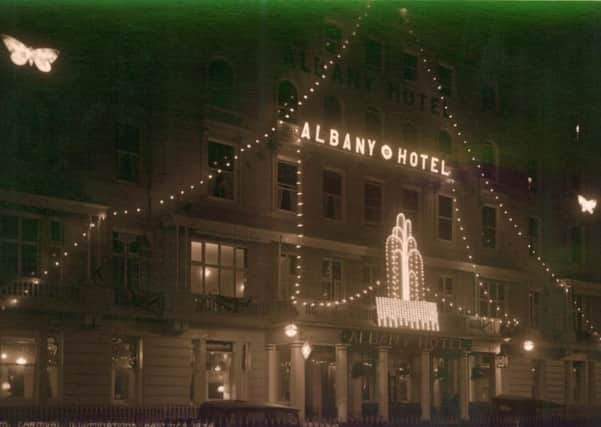

All the area to the west of the Priory-Stream and outside the Hastings Borough boundary (and jurisdiction) where the receding sea left dry land that was quickly settled by squatters who built houses shops and warehouses and paid no rent, rates or taxes.
These settlers named the area “The America Ground” to reminded Hastings Corporation of their independence until, in 1827, a commission decided that the lands should belong to the King and by Christmas 1835 the ground had been cleared of all its buildings and inhabitants and stood empty and was referred to as the `Derelict’ or `Waste Lands` until 1849 when Patrick Francis Robertson, real estate developer and MP for Hastings, leased the crown lands for 99 years at a rate of £500 per year and soon after that work had started on building Robertson Street.
Advertisement
Hide AdAdvertisement
Hide AdOn the south-eastern corner of the area the Queens Hotel had opened by 1862 and Robertson Terrace, overlooking the sea was being constructed incorporating Albany Mansions, the buildings that would later become the Albany Hotel.
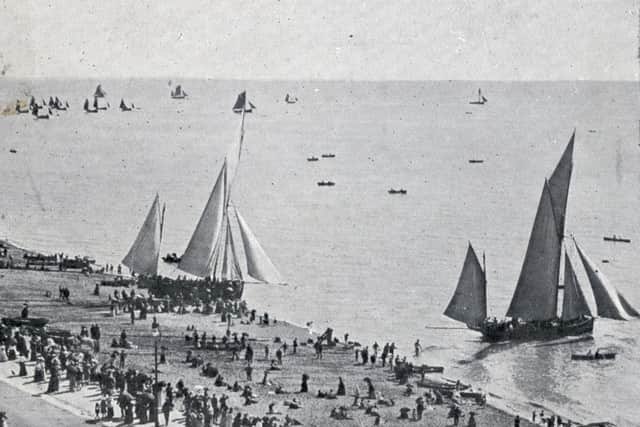

It must be remembered that the population of Hastings and St Leonards had exploded, from 9,500 in 1841, through 14,016 ten years later, 25,929 in 1861, 37,842 in 1871, 49,755 in 1881, 58,546 in 1891 and over 60,000 at the beginning of the new century.
Nothing succeeds like success and Hastings wasn’t just growing it was attracting wealthy visitors as well and the visitors needed somewhere to stay but, as the final quarter of the 19th century approached, all the prime sites suitable for hotels had been taken so private houses were converted to that use; in this case Albany Mansions.
Parsons New Illustrated Guide to Hastings & St Leonards for 1886 tells us:
Advertisement
Hide AdAdvertisement
Hide Ad“Albany Hotel - as a first-class family hotel, the proprietors have done wisely indeed in their selection of a site for such an establishment. For the weak-chested - in fact, invalids of every description - no better spot could have been chosen. While enjoying all the advantages of our front line, visitors here will escape nearly all winds, and obtain the greatest quietude in this salubrious and pleasant terrace.
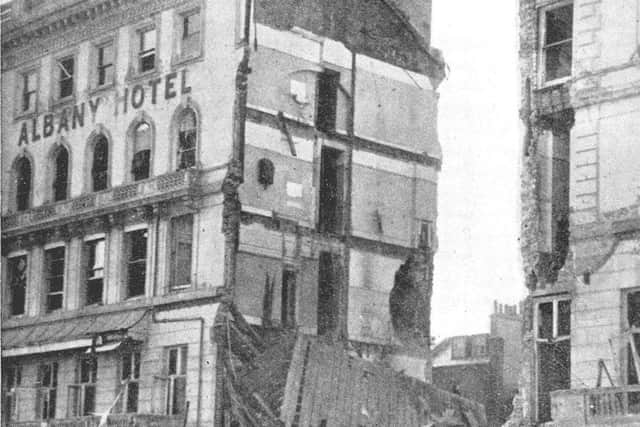

“The Hotel was opened on Tuesday, the 24th March, 1885. An important addition has recently been made to this establishment by the taking in of two houses, the internal arrangements at the same time undergoing considerable alteration and improvement. There are, in all, some 120 rooms devoted to the use of visitors, all fitted up with the incandescent electric light.
“The apartments are decorated in the most approved and modern style, and very comfortably furnished. Distinct suites of apartments can be obtained, a provision sure to meet with a grateful recognition from those who, visiting at the seaside, like to secure quarters which, with almost the privacy of a family residence, give to the holders all the advantages of an hotel. A passenger elevator to every floor has been added, which has proved an undoubted acquisition. The water supply and other matters of sanitation have been carefully attended”
The Albany continued as one of the town’s premier hotels up to the last war when it became a billet for Canadian troops until lunchtime on Sunday, May 23 1943, when the Borough had its second heaviest aerial attack of the hostilities with many fatalities and serious injuries. The raid was carried out by fighter-bombers which came in from the east of the town and swept low along the Front Line machine-gunning and bombing as they went.
Advertisement
Hide AdAdvertisement
Hide AdOne bomb caught the top of the Queen’s Hotel where the restaurant and bars were full of people, and scored a direct hit exploding on the Albany killing a number of Canadians stationed there. After lying vacant for many years the site was then redeveloped in the 1970’s as Albany Court and also provided a seafront entrance to Debenhams Department Store.
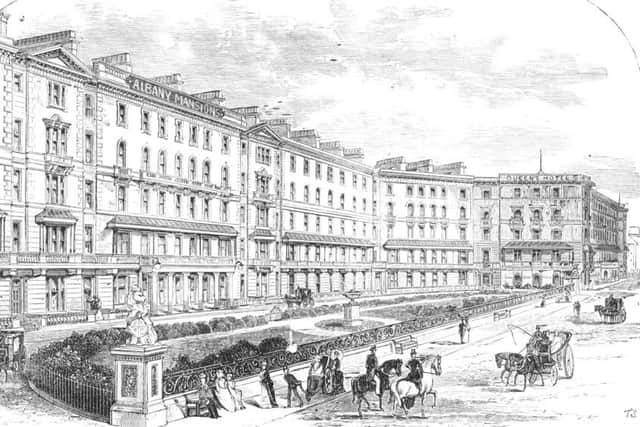

All illustrations throughout this series are from Ion Castro’s own collection and he can make available copies of many of the historic images used in this series. There’s more local history on Ion’s website, www.historichastings.co.uk
Captions:
Ad 1.
A late 19th century ad used in several Parsons publications.
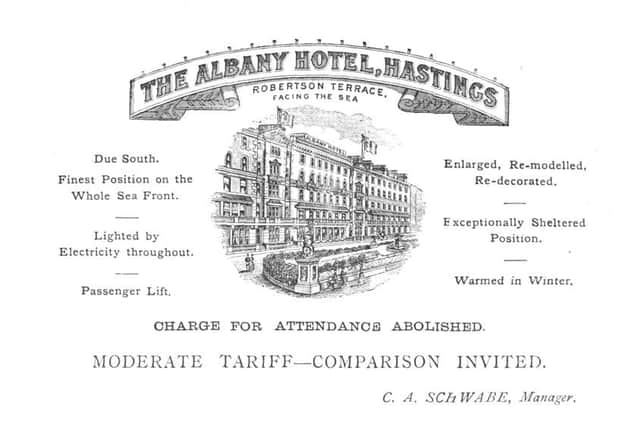

Ad 2.
By the early 1930’s Hastings’ Official handbook was carrying this advertisement.
Ad 3.
Advertisement
Hide AdAdvertisement
Hide AdFrom the end of the first decade of the last century, being able to catch a tram without the noise of them passing the front door was considered an advantage.
Ad 4 1939.
1939 and the last season before the hotel closed to guests and was taken over by Canadian troops.
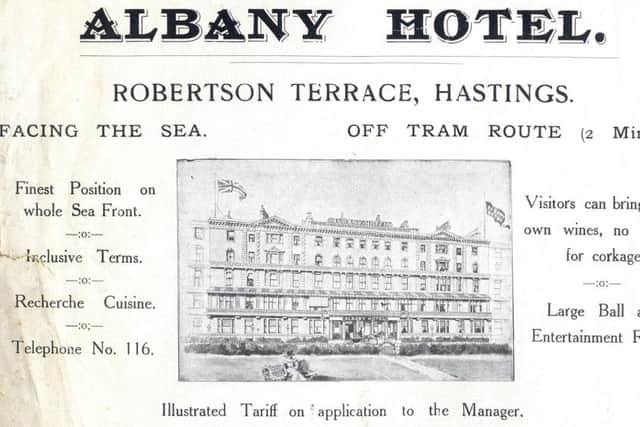

Ad 5 1891.
1891 Notice the statement “Only Hotel in Hastings or St.Leonards with electric light in every room.
Bombed
Showing the considerable bomb damage and the end of an era, the hotel was never rebuilt, the site remained empty for nearly 30 years until redeveloped as Albany Court which included the demolition of Gidersleeves Hotel next door.
Carnival Illuminations 1934.
Advertisement
Hide AdAdvertisement
Hide AdParticipating in the 1934 Carnival celebrations - the Carnival to which it refers had been started at the end of the 19th century as a four or five day extravaganza. In 1969 it was decided not to visit the Old Town so the Old Towners set up their own Carnival which is still with us and the original fizzled out.
Ballroom.
This pre first war image is part of a set of postcards issued by the hotel and shows the opulence of the hotel and its facilities a hundred years ago.
View from the Albany Hotel.
One of the set of postcards issued by the hotel a century ago, showing how close it was to the beach and notice the huge number of boats, including the pleasure yachts the fishing fleet and small rowing boats as well as those drawn up on the beach. The roadway in the foreground has been replaced with the ramps that lead down to the ‘underground parking station’ as Sidney Little called it in the early 1930’s when he created the new, wide promenade that by-passes the town centre.
A corner of the drawing room.
One of the early 20th century series of postcards issued by the hotel showing the comfort afforded by the drawing room.
Albany Mansions 1886.
Advertisement
Hide AdAdvertisement
Hide AdUp until the 1880’s and before the hotel the site was private housing, and this view shows Albany Mansions that were to form the core of the Albany Hotel and houses either side of the Mansions were acquired to provide a substantial 102 room hotel.